Learn how to cut mushrooms in four different ways with this easy step-by-step guide. The hearty flavor and texture makes them a perfect addition to stir-fries, soups, sauces, and more!
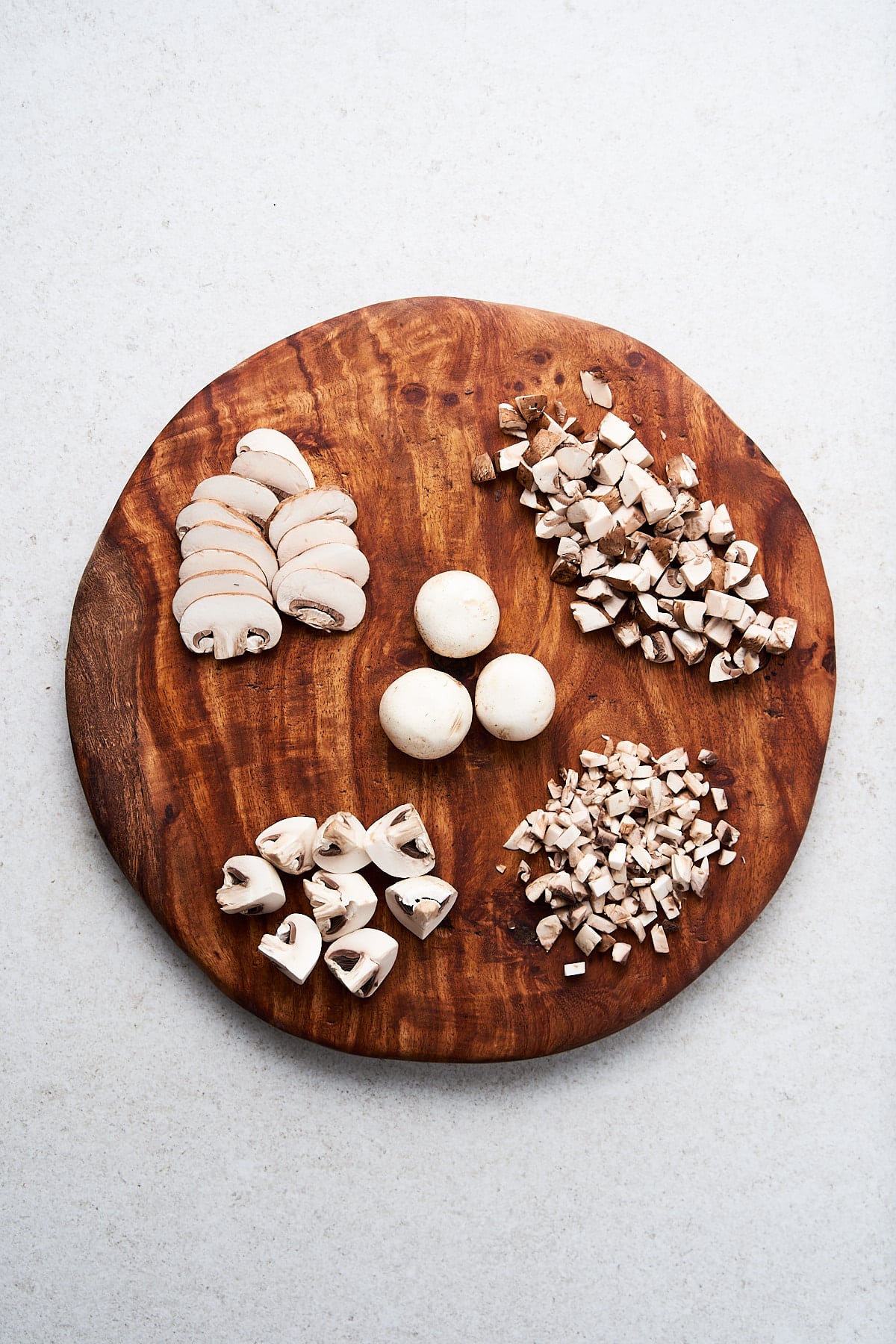
Mushrooms are one of the most versatile ingredients out there. From pulled “pork” and mushroom stroganoff to vegetarian pâté and buttermilk fried mushrooms, these fungi can do it all! Learning how to cut mushrooms will make your cooking experience much more enjoyable, especially since they play such a large role in vegetarian recipes.
I’ll be discussing how to cut mushrooms in slices, dices, cubes, and quarters today, but there are a ton of different options. My best advice is to practice and find out which method works best for you!
Types of Mushrooms
You may be surprised to hear that there are over 2,000 species of edible mushrooms grown around the world. Of course, there are better-known varieties like oyster mushrooms and truffle mushrooms. But, have you ever tried enokitake or shimeji mushrooms?
For this guide, I’m using white button mushrooms and cremini mushrooms (also known as “baby bellas”). But, it’s a similar story for cutting most other types of mushrooms!
Fun fact: Did you know button, cremini, and portabello mushrooms are all the same type of mushroom (Agaricus bisporus)? The differences in appearance are just due to their age!
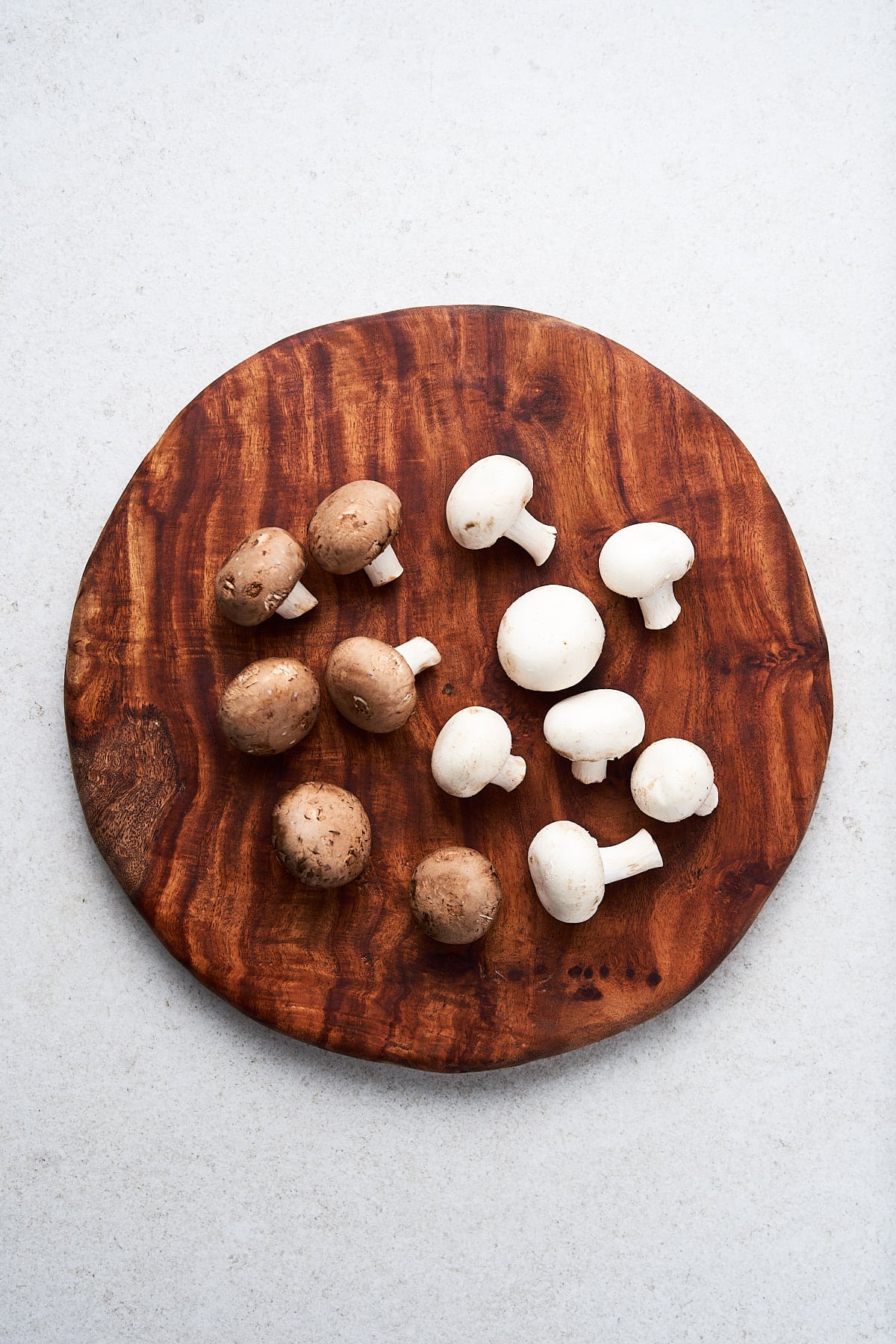
How to Cut Mushrooms
First off, you’ll need to clean and stem the mushrooms. Using a moist paper towel, gently remove excess dirt or grit that might be stuck on them.
Try to avoid rinsing or submerging fungi for long periods as they soak up water quite quickly (they’re like little sponges!). The excess liquid will alter the overall crisp level, especially if you’re planning to sauté them.
To stem or not to stem? Not everyone stems their mushrooms, but there are a couple of benefits that come with removing them.
First, it makes cutting the mushrooms safer and easier. Secondly, the texture can be quite woody and unpleasant in some cases. It really just depends on the specific variety and your preferences (we love chopping up the stems and incorporating them into recipes, like in these stuffed mushrooms!).
Prefer to watch instead of read?
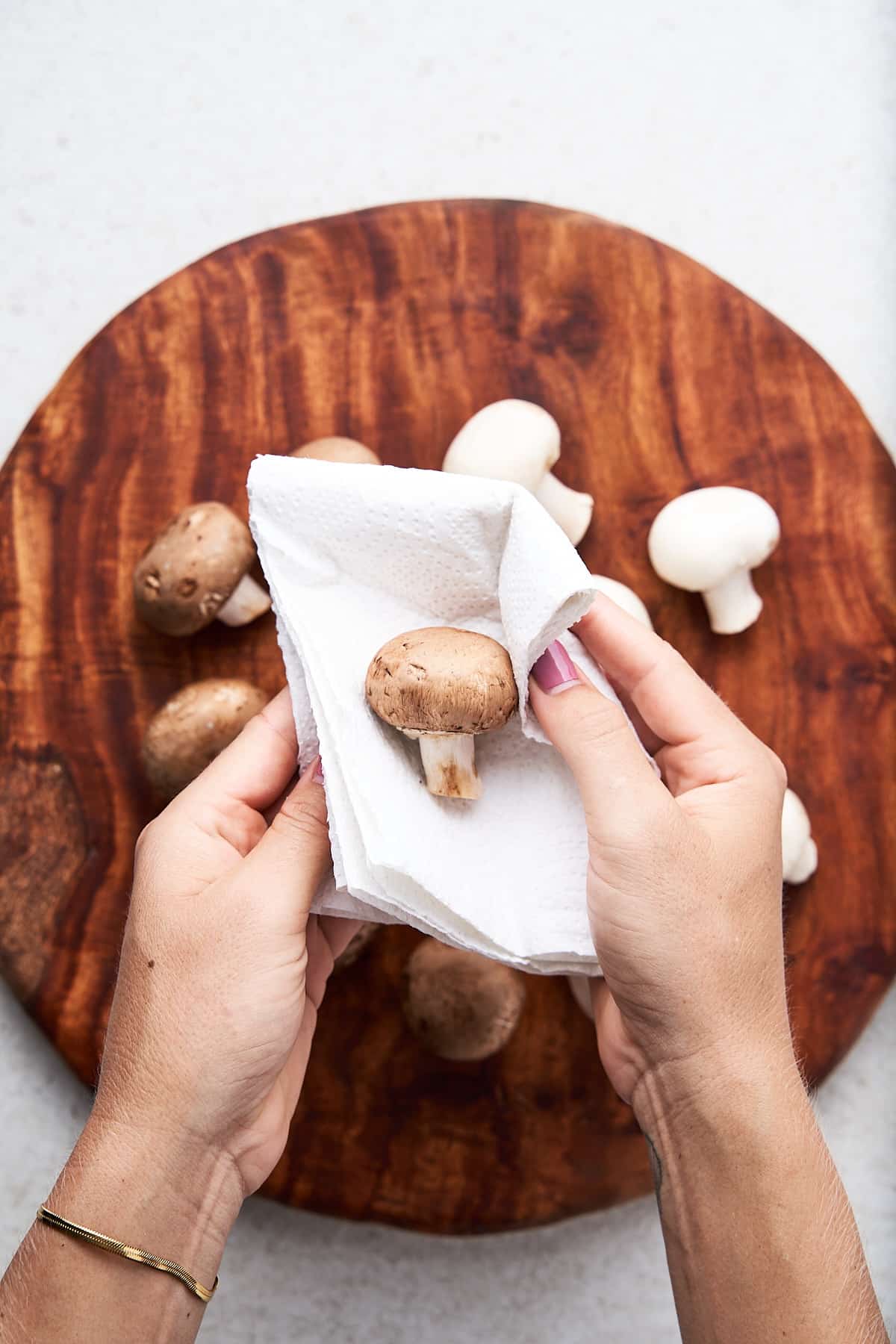
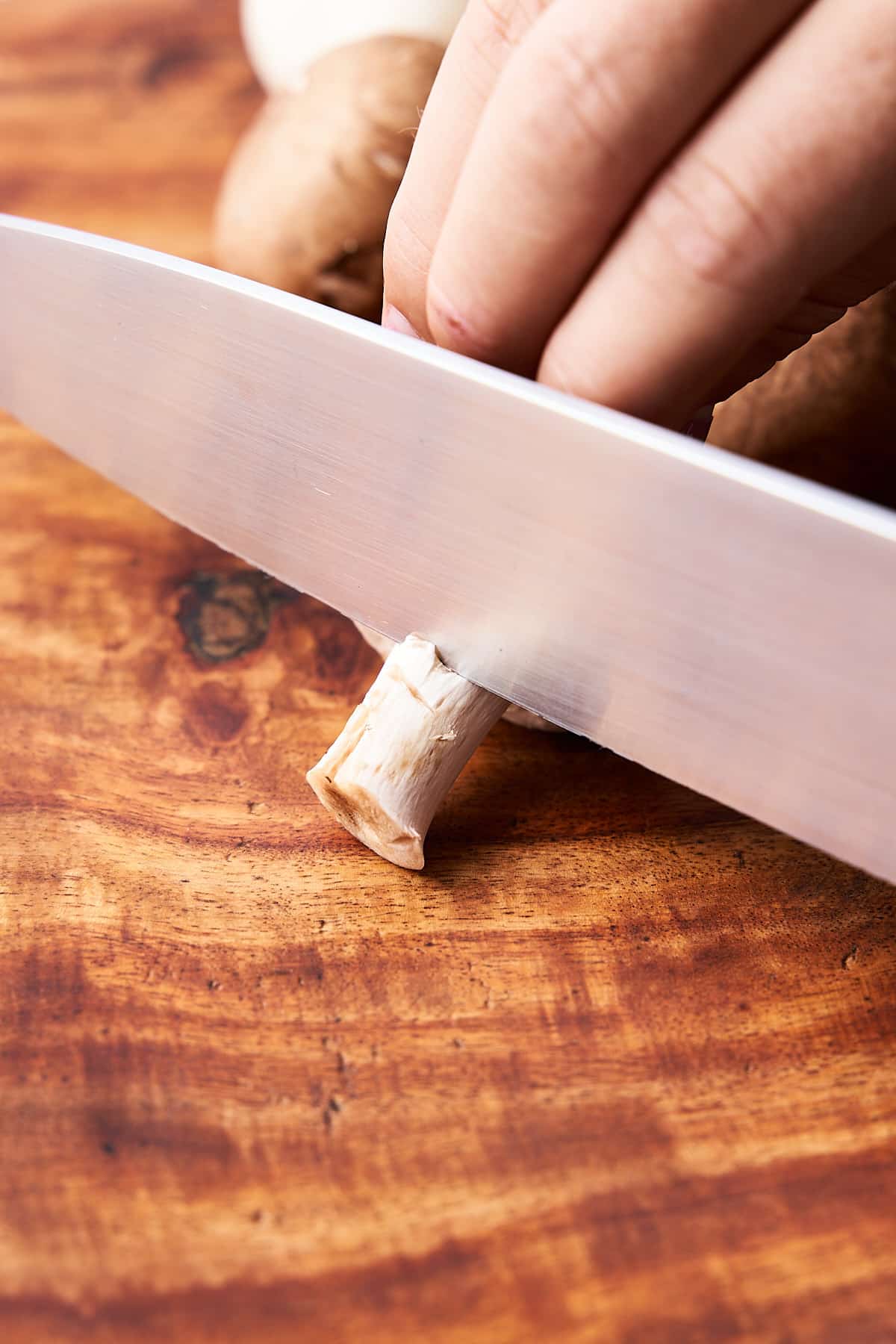
Option 1: Quartered
Place the mushroom stem side down on a cutting board. Using a sharp knife, slice it in half. Rotate the mushroom 90 degrees, then slice it in half again.
Quartered mushrooms are great for stir-fries, chilis, chunky stews, or roasting with a bit of olive oil.
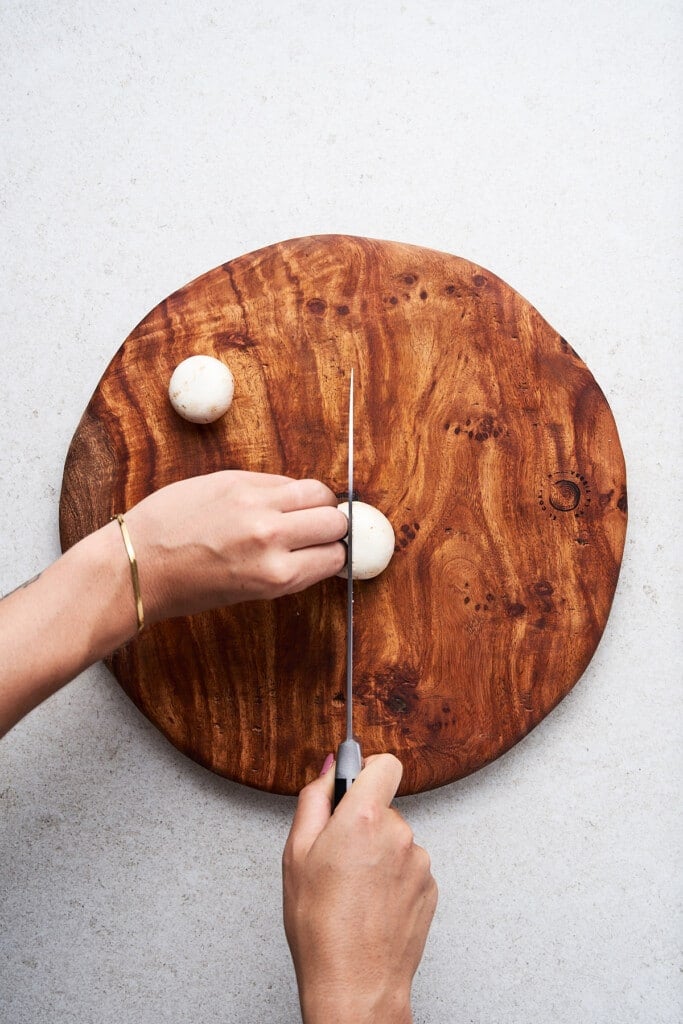
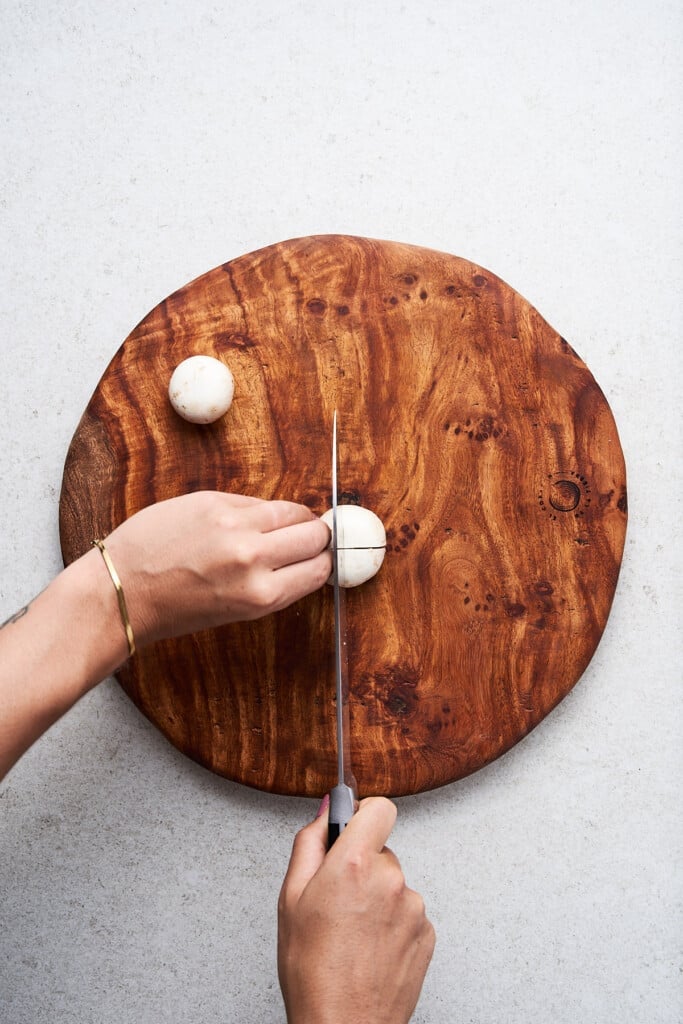
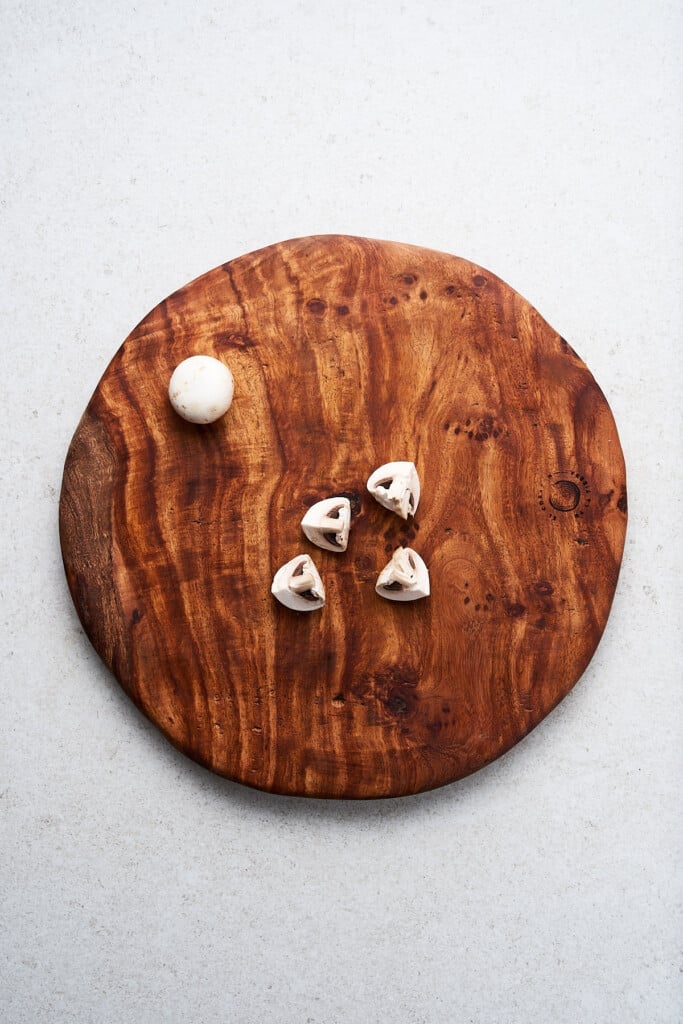
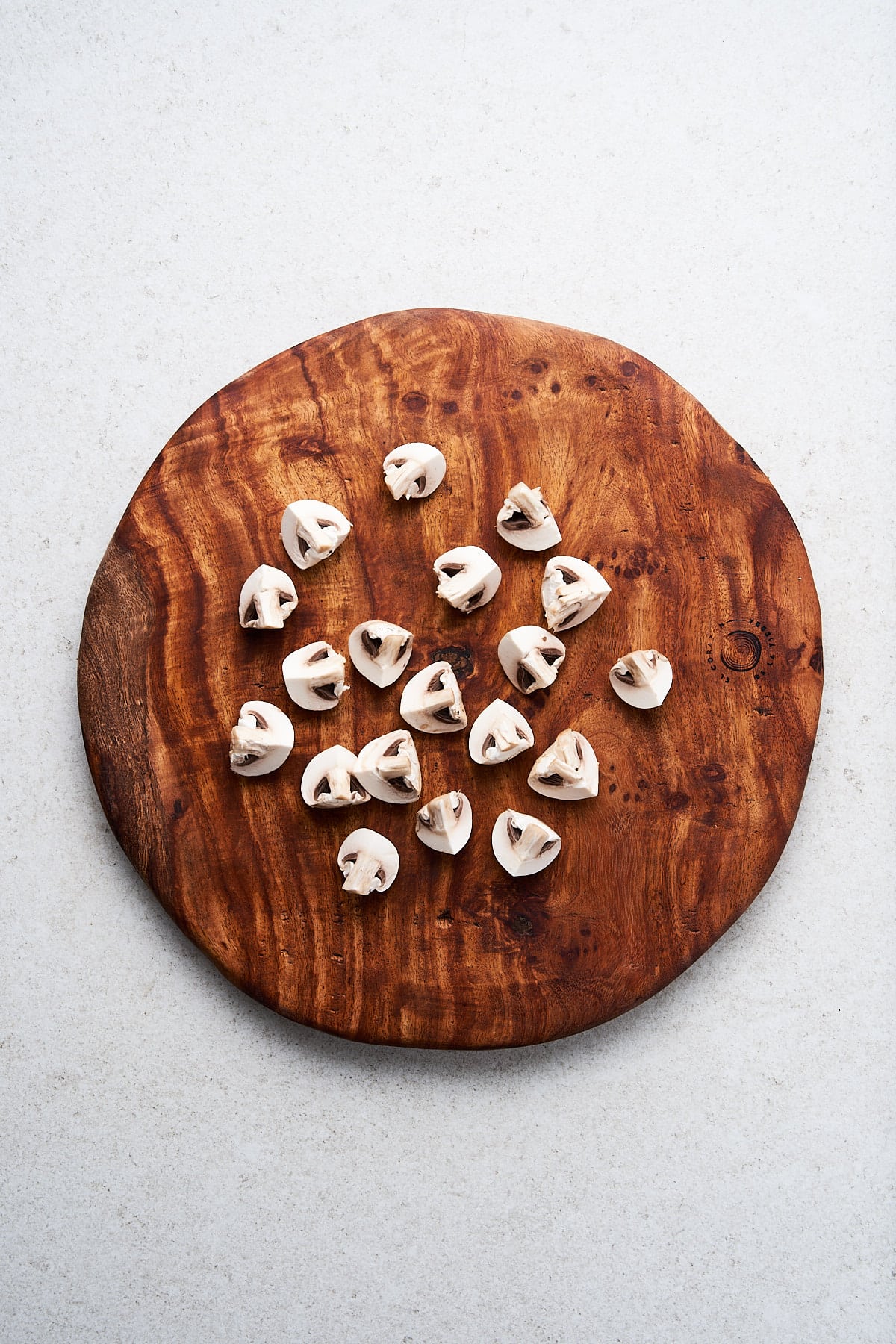
Option 2: Sliced
Place the mushroom stem side down on your cutting board. Hold the mushroom in place with your non-dominant hand, making sure to press your knuckles towards the knife to protect your fingers.
Slice the mushroom as thick or thin as you’d like, continuously edging your knuckle away from the knife as it moves closer.
Tip: The motion of the blade should be down, then slightly forward as you slice.
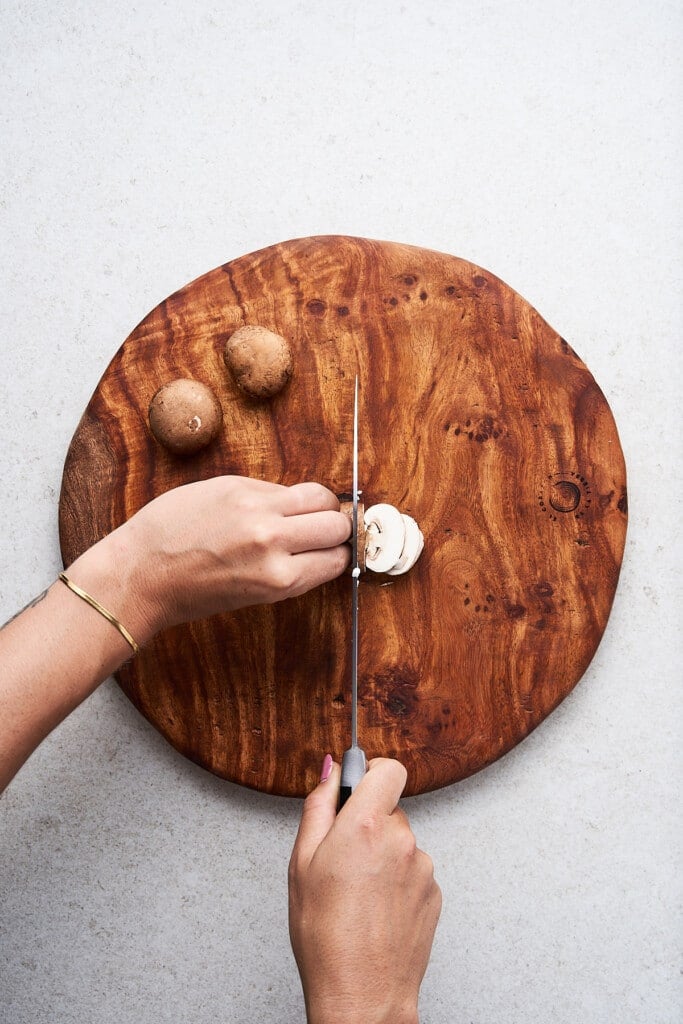
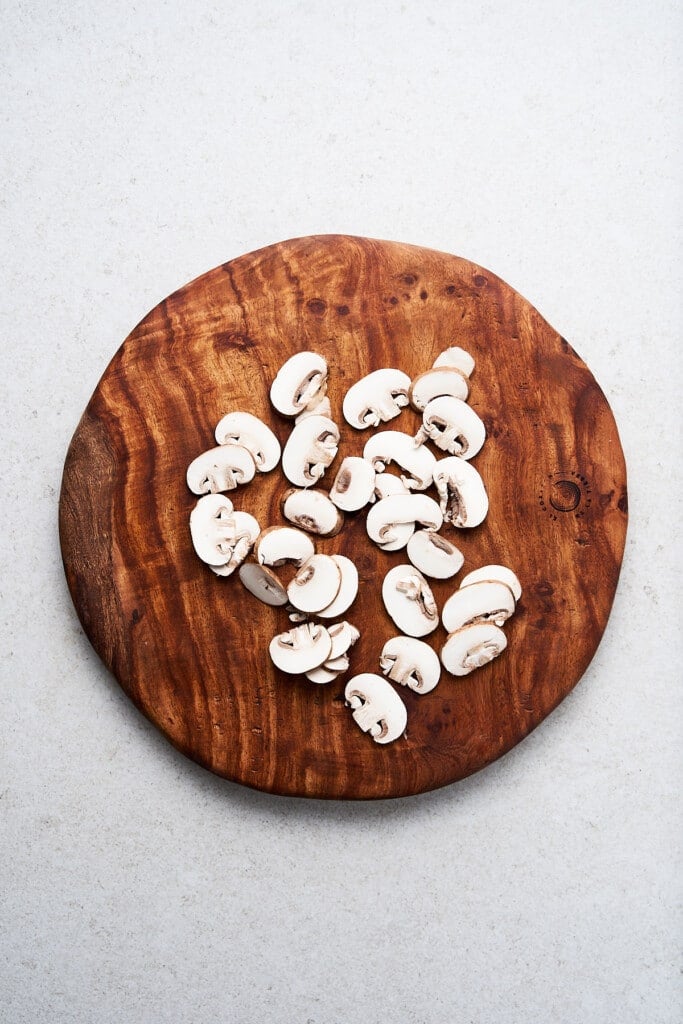
Option 3: Cubed
Place a stemmed mushroom on its side (see lower left photo). Slice it in half, but not all the way through. Rotate it so that the stem side is facing down again (middle photo).
Slice it into 1/4-inch thick sections, making sure to not go all the way to the edge. Rotate the mushroom 90 degrees, then chop the sections into cubes (bottom right). Finish cubing the end piece, then repeat with the rest of the mushrooms.
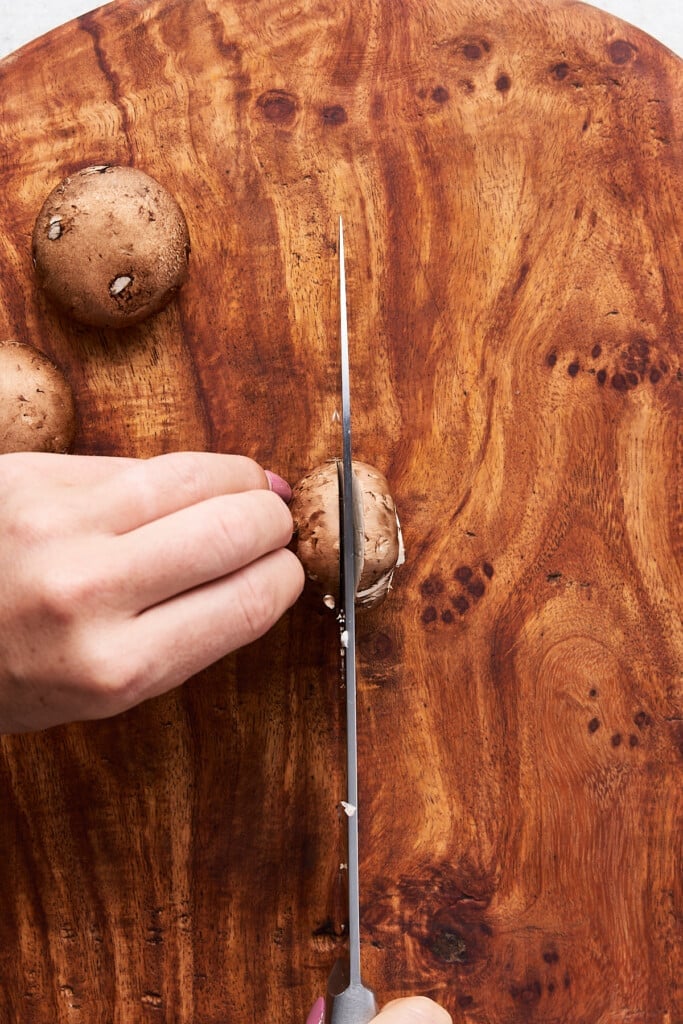
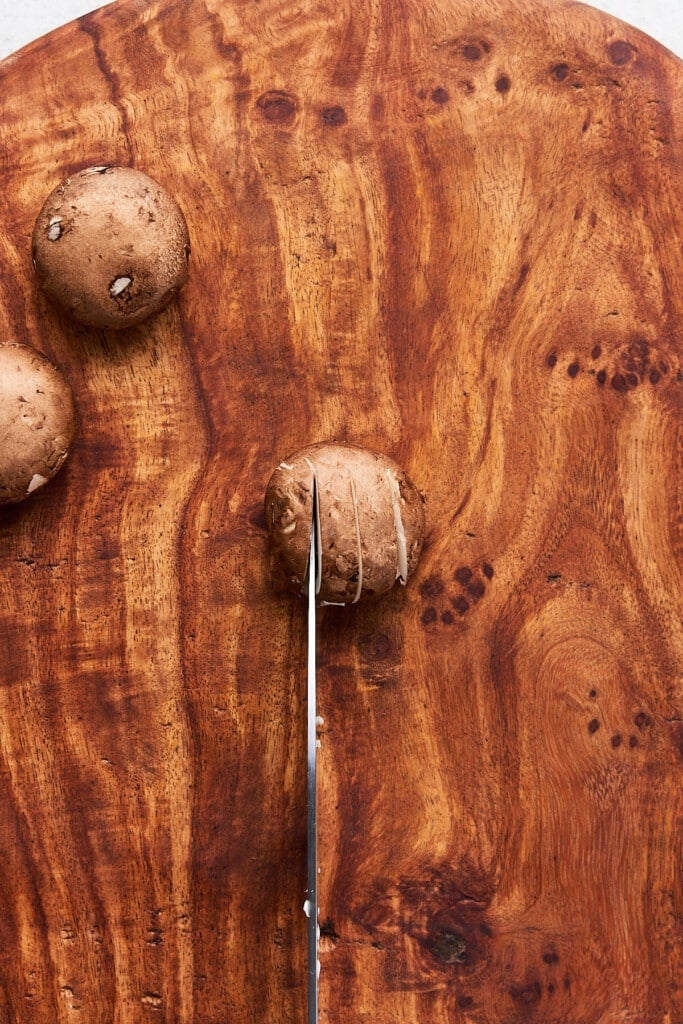
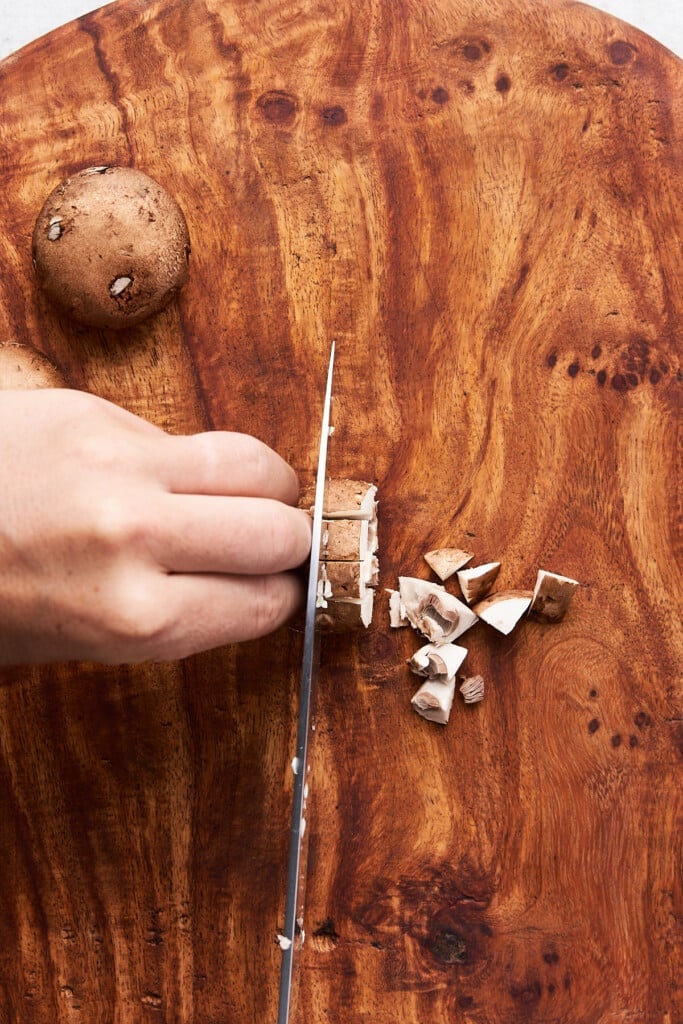
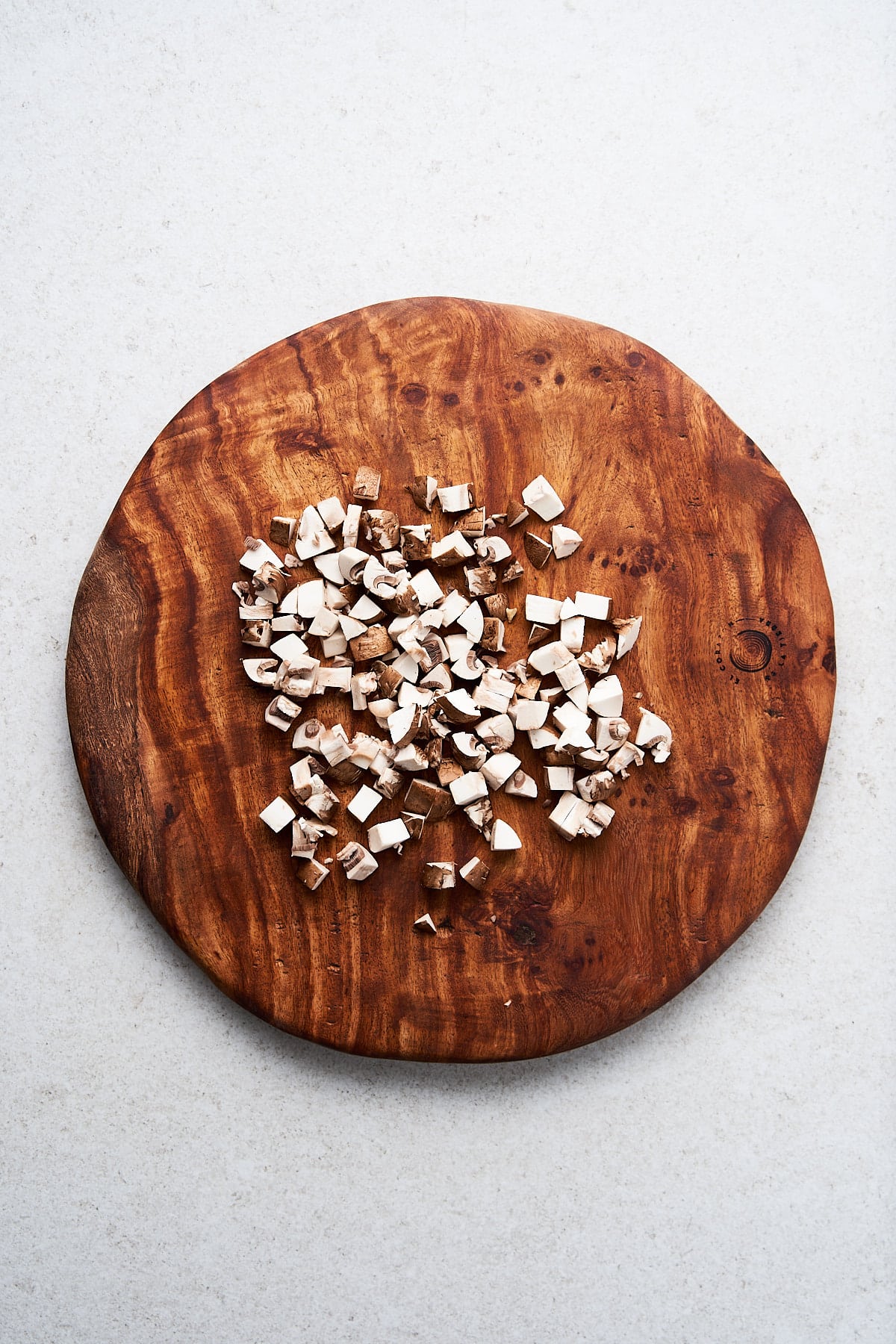
Option 4: Diced
Start by slicing the mushroom as laid out in option 2. Without moving the sliced mushroom, cut it into matchsticks (see middle photo). Rotate your cutting board or knife 90 degrees, then dice the mushroom matchsticks into small pieces.
Diced mushrooms are the perfect option for ground meat alternatives like chorizo, bolognese, and burgers.
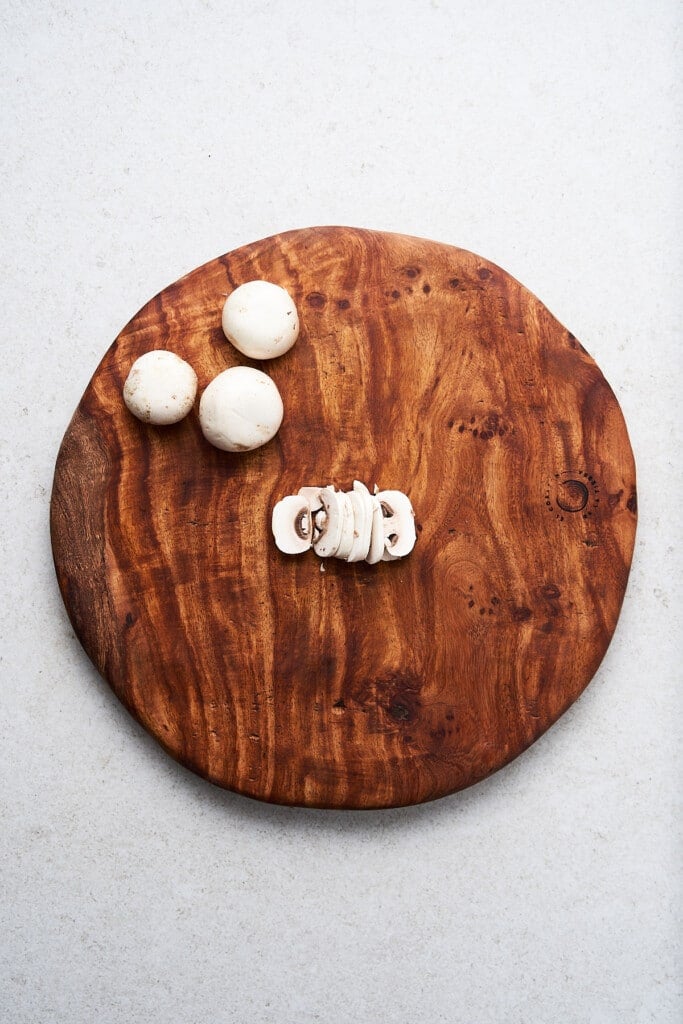
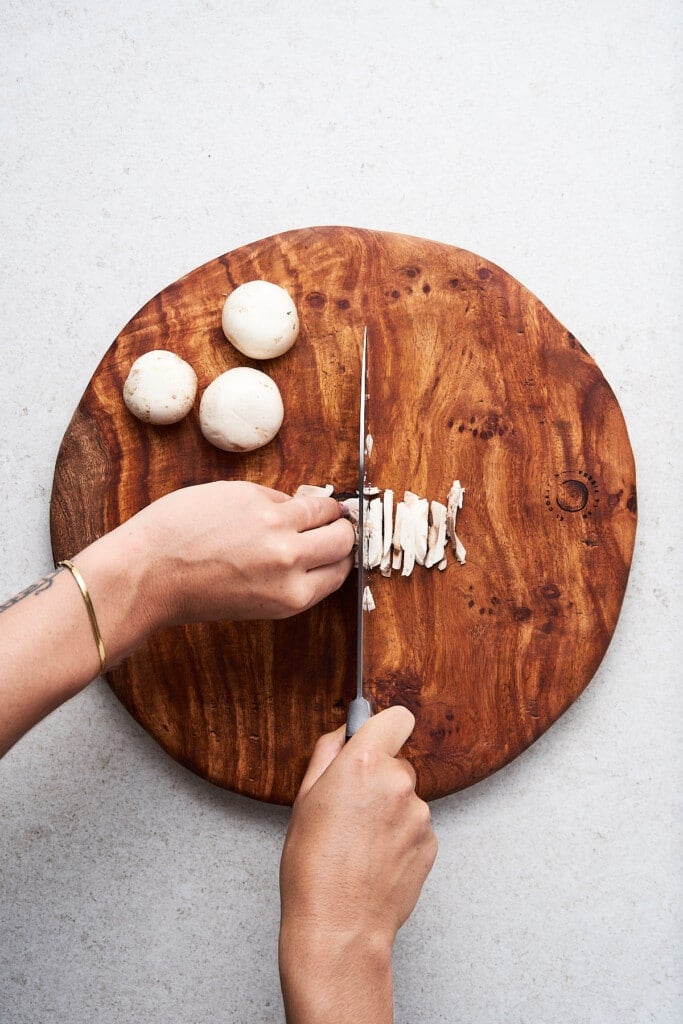
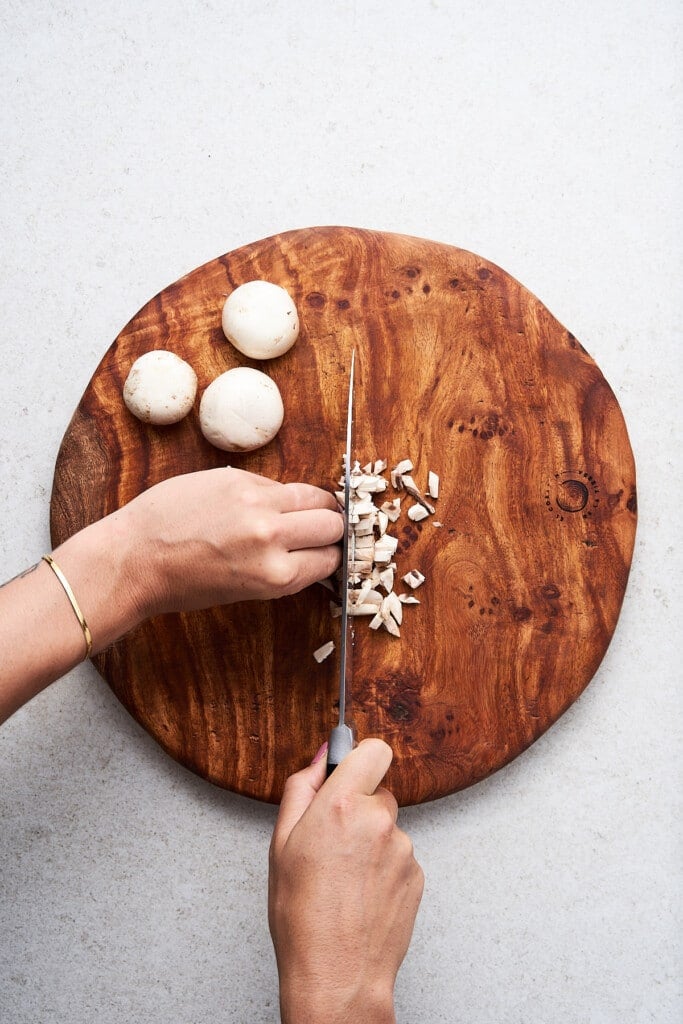
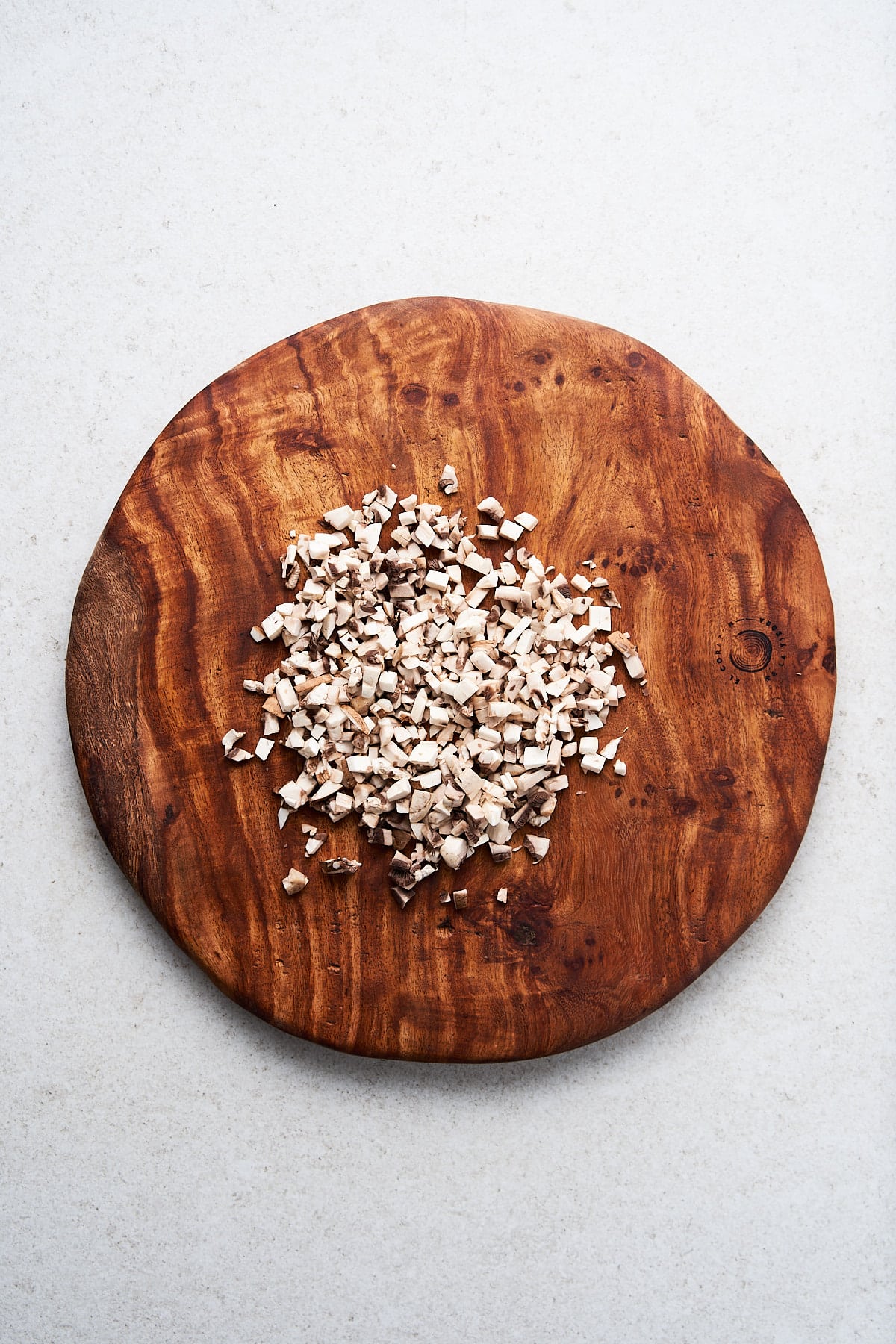
Ways to Use Mushrooms
Mushrooms are an incredibly versatile ingredient that are all-stars in the vegetarian kitchen. Here are a few of our favorite mushroom recipes!
- Dice or mince them for mushroom meatloaf.
- Slice them to be used in mushroom risotto or gyros.
- Toss quarters with olive oil and garlic, then roast them.
- Add slices or cubes to a stir-fry.
Storing Mushrooms
Fridge: Keep fresh mushrooms in a vented container lined with a paper towel, or a reusable bag with the top partially open. This will help reduce excess moisture. If stored this way, fresh mushrooms should last a minimum of 4-5 days in the fridge.
Freezer: I don’t recommend storing fresh mushrooms in the freezer since you’ll end up with excess water once they thaw. If they’re already cooked and mixed with other food, freeze them as per the recipe instructions.
Reheating: Depending on the cooking method, mushrooms can be re-sautéed, baked, microwaved, or steamed.
How to Choose Mushrooms
When you’re on the hunt for mushrooms, look for those that are fairly evenly colored. They shouldn’t have any gray-brown spots, which can indicate decay. Button and cremini mushrooms should have a tight cap with little-to-no gills showing underneath.
For other types of mushrooms (like portabello), the gills should look fresh and firm. Check the stem for signs of dryness, mushiness, or shredding, and avoid those mushrooms.
Dirt is completely okay to find on mushrooms — that’s where they’re grown after all. If they are excessively dirty, you may have to give them a quick rinse and thorough dry once you get home.
Nutritional Benefits
Vitamin D
If grown in optimal conditions, mushrooms are one of the best sources of vitamin D, which plays a key role in bone and immune health.
Zinc
Mushrooms, particularly cremini, are a rich source of zinc, which is also important for the immune system and development of infants and children.
Potassium
Potassium plays a large part in lowering blood pressure, and luckily it’s found in mushrooms! The high levels of potassium help counteract the negative side effects that too much sodium can have on blood vessels.
Mushroom FAQs
The overall flavor of mushrooms will not be affected by the cutting method, but each one imparts unique textures that are best suited for specific recipes. Always check the recipe to find out which shape you should be cutting them into.
Both a chef knife and a utility knife will work well for cutting mushrooms. If you are in a pinch, a paring knife will do the trick (grab our guide to knife types here!). Either way, make sure your knife is sharp.
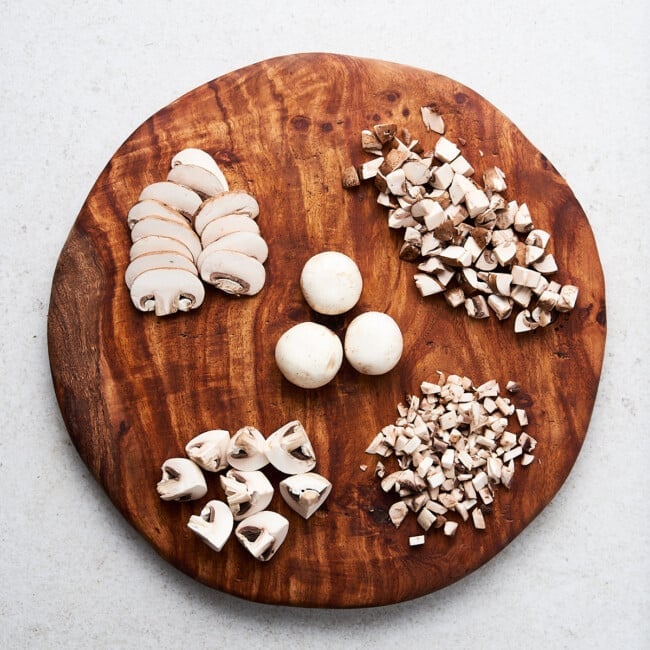
Ingredients
- 1 cup mushrooms
Instructions
- Option 1 – Quartered: Place the mushroom stem side down on a cutting board. Using a sharp knife, slice it in half. Rotate the mushroom 90 degrees, then slice it in half again.
- Option 2 – Sliced: Place the mushroom stem side down on your cutting board. Hold the mushroom in place with your non-dominant hand, making sure to press your knuckles towards the knife to protect your fingers. Slice the mushroom as thick or thin as you’d like, continuously edging your knuckle away from the knife as it moves closer.
- Option 3 – Cubed: Place a stemmed mushroom on its side. Slice it in half, but not all the way through. Rotate it so that the stem side is facing down again. Slice it into 1/4-inch thick sections, making sure to not go all the way to the edge. Rotate the mushroom 90 degrees, then chop the sections into cubes. Finish cubing the end piece, then repeat with the rest of the mushrooms.
- Option 4 – Diced: Start by slicing the mushroom as laid out in option 2. Without moving the sliced mushroom, cut it into matchsticks. Rotate your cutting board or knife 90 degrees, then dice the mushroom matchsticks into small pieces.
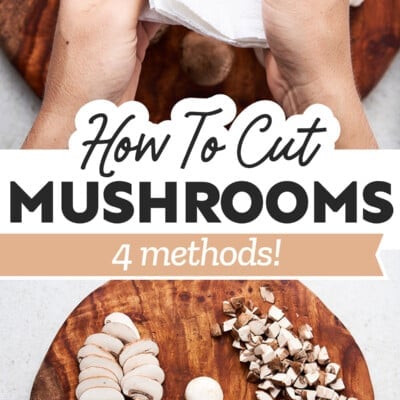
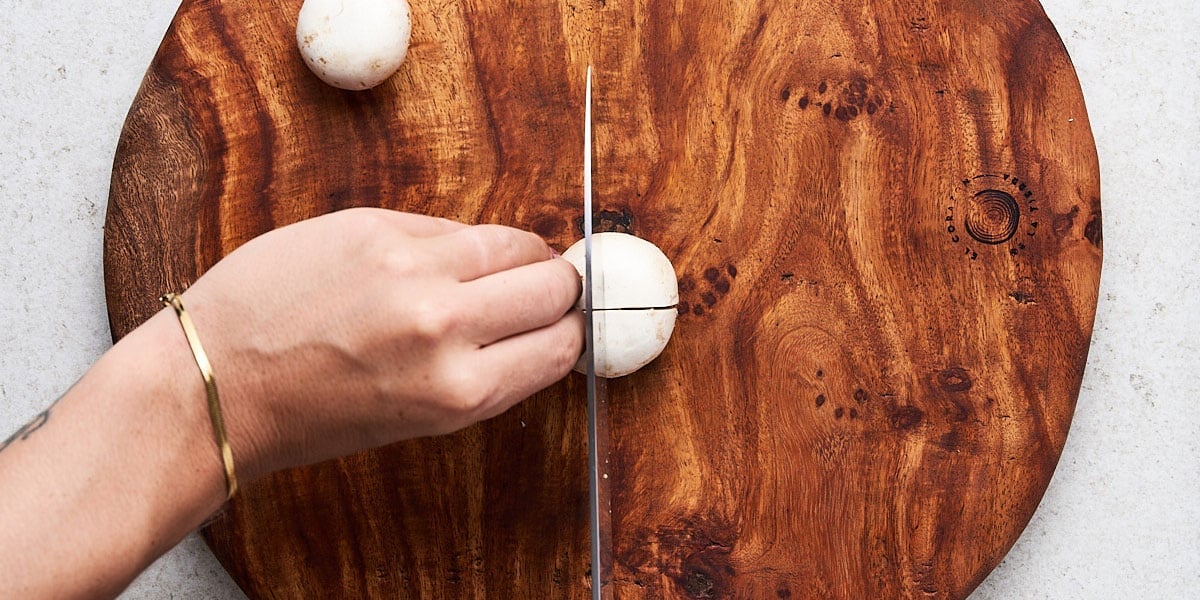
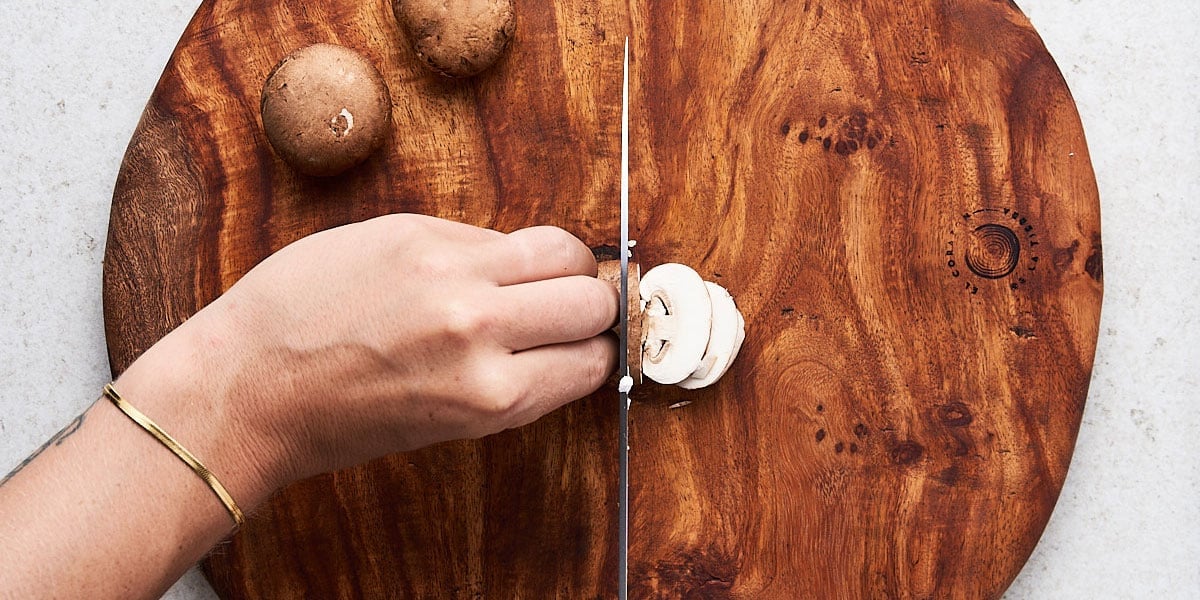
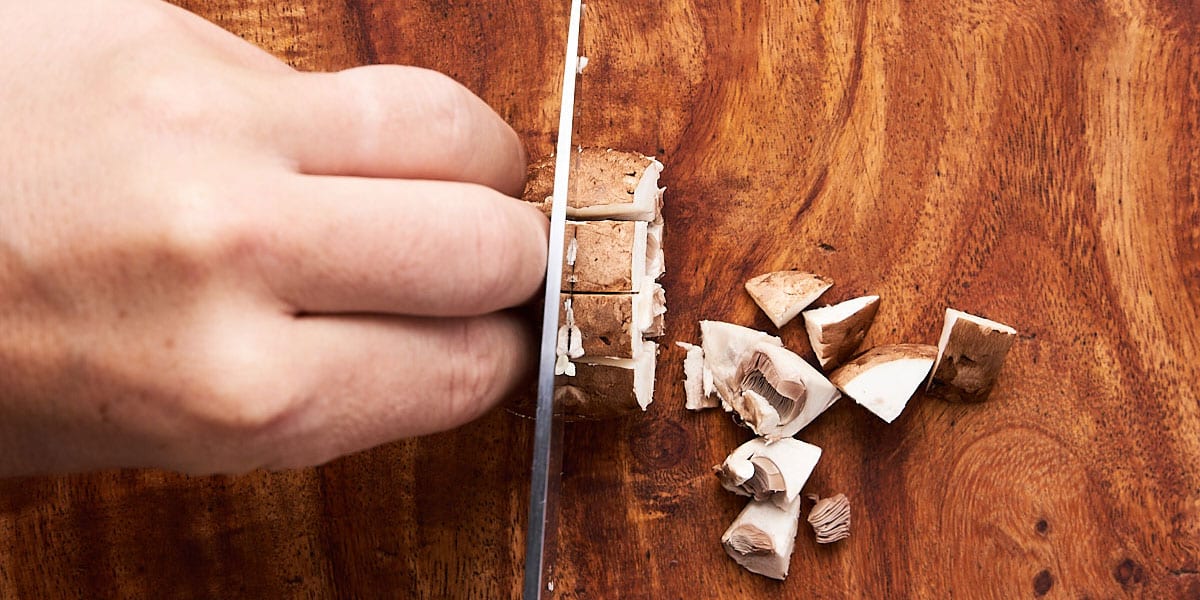
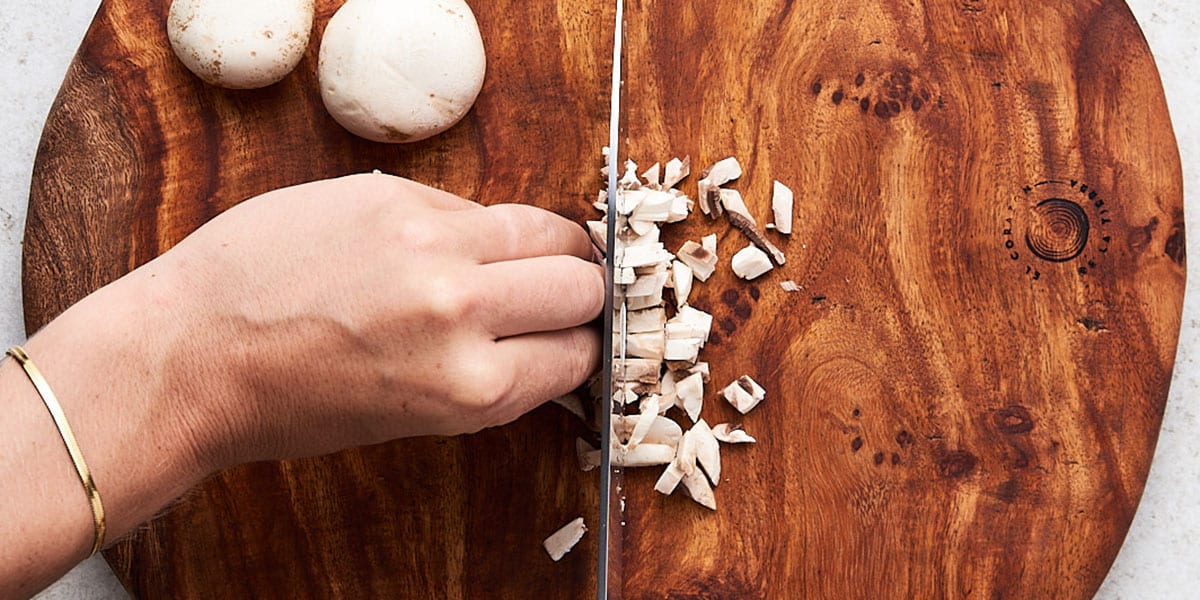
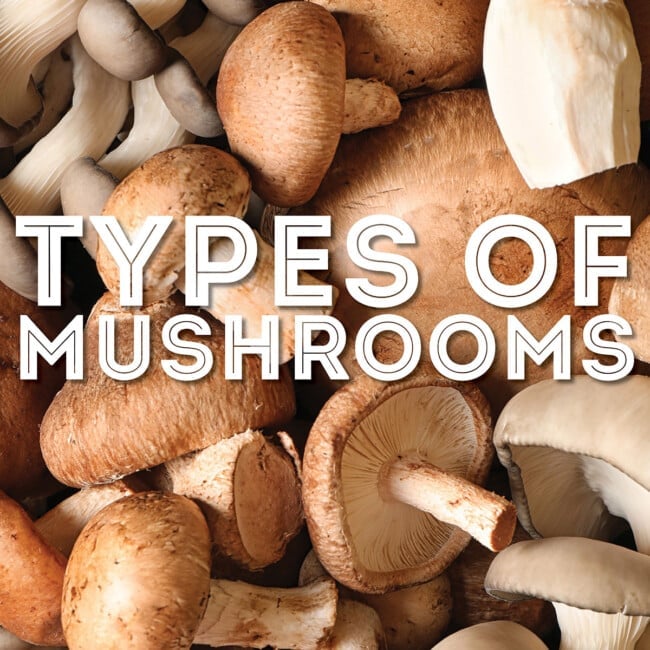
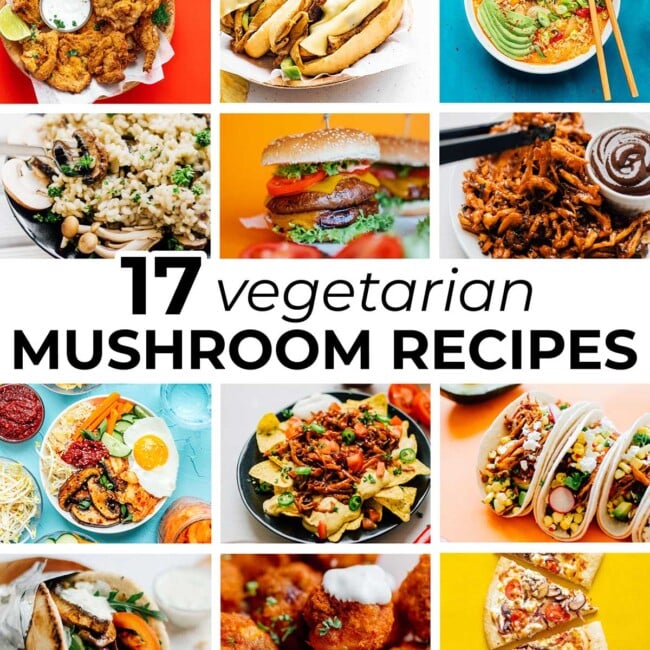
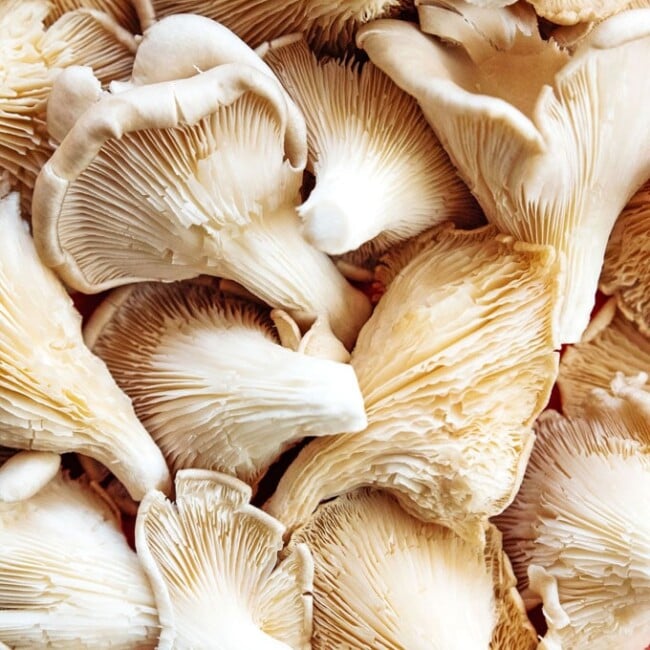
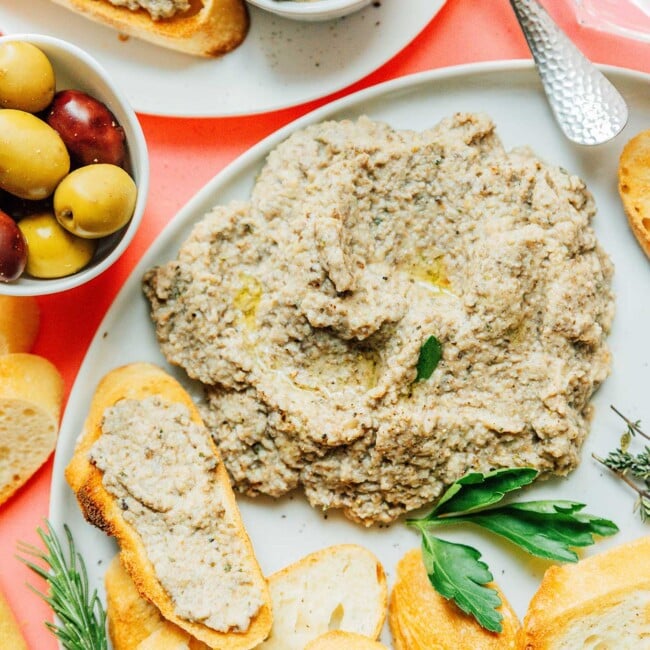
William says
Is there a magazine published by you? How can I get a subscription?
Sarah Bond says
Hi William! I share an Eatmail newsletter that you can subscribe to here 😀